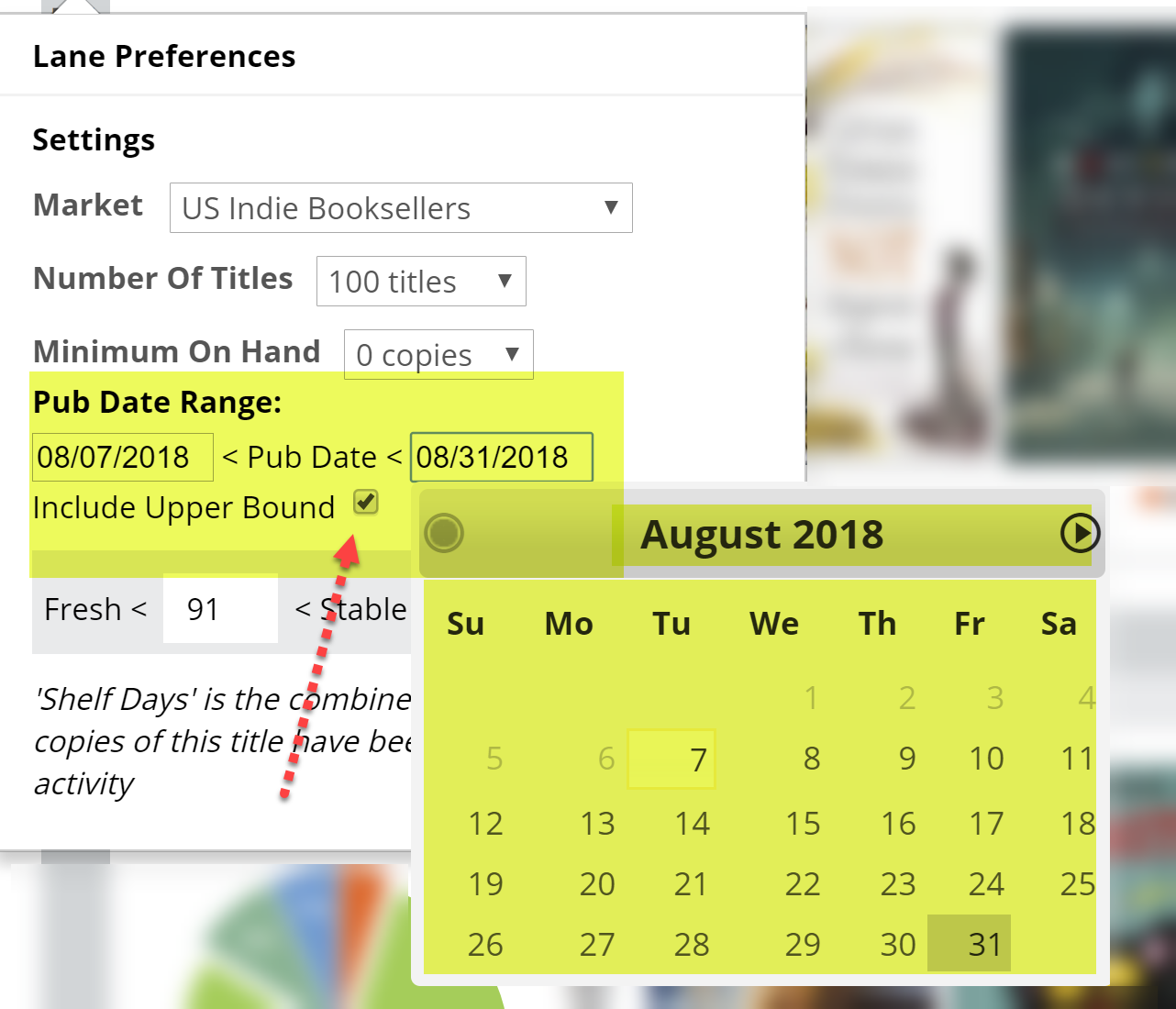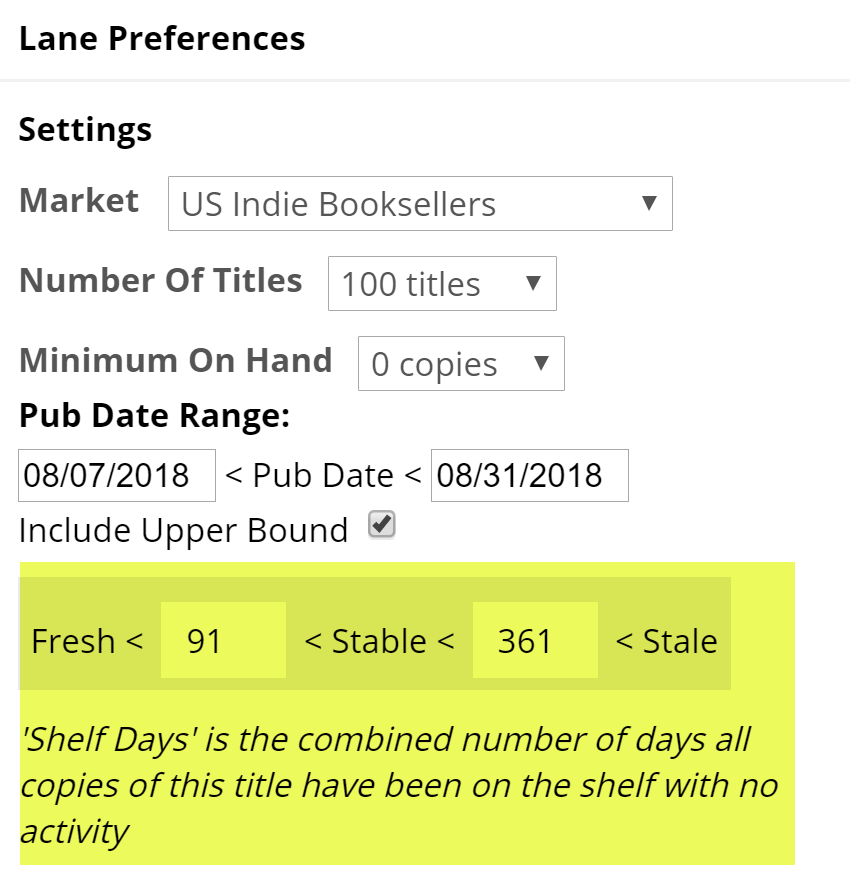Click the drop-down link next to the description of the lane to reveal a menu in which you can set a few parameters for this graph.
Here’s an explanation for each of your options:
Market:
You can select to view results for your own market, or another market’s top-selling or top-circulating titles. So, this graph will show the aggregated on-order data that shows in the Point-of-Sale (retail) or ILS feeds from each organization in that selected market. Retailer data is particularly rich here.
Number of Titles:
How much time do you have? What sort of project are you working on? How big is your library, or the part of the collection you’re looking at? A quick look at the 100 most-ordered titles in a given category (see about applying filters here) can be a nice and quick view of upcoming big titles you should probably know about.
With that in mind, this library can view the top 100 titles and really just zero in on a few that are not currently on order, whether those titles were missed or skipped.
Minimum On Hand:
You’ll want this set to “0” for this graph, since these are, by definition, titles that are not currently in stock.
Pub Date Range:
The most common use for this graph, and a best practice, would be to look, mid-month or so, at the most-ordered titles coming out next month to help you catch those bigger titles that you may have missed. You can set that range of publication dates here. You can, if you like, extend this out a full season, even, to see which titles are the most popular among your peers for the upcoming holiday season, for example. Looking at a larger range, you may want to increase the number of titles you’re viewing. The Include Upper Bound option allows you to set an end date. So instead of looking at all forthcoming titles, you can look at forthcoming titles within a specific time frame.
Shelf Days:
Shelf Days are fully explained here. This essentially allows you to set an upper and lower performance measure on your inventory. These numbers are not really as relevant in this graph as in the rest of the Analytics tools.






